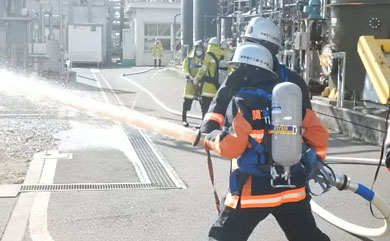Sustainability InitiativesSafety Initiatives
Based on the principle of giving the highest priority to safety, all employees are involved in safety activities with the aim of achieving zero accidents and zero disasters.
As part of activities related to safety and health, the President and other company management and labor union representatives hold labor-management meetings twice a year to exchange opinions.
In accordance with the Industrial Safety and Health Act, each business site holds monthly meetings of the Health and Safety Committee, etc. to discuss matters related to health and safety, and to work together with labor and management to improve health and safety.
The 9th RC Action Targets
- Target: Zero major occupational accidents resulting in lost work time (employees and partner company contractors), zero equipment accidents
- Result: In FY2023, three major occupational accidents resulting in lost work time occurred, while there were no equipment accidents.
| FY 2021 |
FY 2022 |
FY 2023 |
||
|---|---|---|---|---|
| Our company | Major occupational accidents (four or more lost workdays) | 0 | 0 | 0 |
| Other accidents results in lost workdays (less than four lost workdays) | 2 | 1 | 1 | |
| Partner companies | Major occupational accidents (four or more lost workdays) | 0 | 1 | 3 |
| Other accidents results in lost workdays (less than four lost workdays) | 0 | 0 | 3 | |
Although there were no major occupational accidents involving employees, three occupational accidents that lasted for four or more days of lost work time occurred partner company contractors that were engaged in construction or contracting work at our plants. In addition to reviewing management regulations related to contracting work, we will thoroughly share information with all workers, including subcontractors, on on-site risk prediction (KY) before construction starts, improve safety awareness, and thoroughly prevent recurrence.
Promotion of safety management and security measures
The Group promotes thorough safety management and security measures for facilities to improve the safety and health of our employees and partner company employees, as well as ensure stable product supply to our customers.
The Shibukawa Plant received the Fire and Disaster Management Agency Director-General’s Award for Excellent Hazardous Material-Related Site in FY2021 in recognition of its ongoing efforts in the safe management of hazardous materials. This award is given to hazardous materials handling businesses that have made significant contributions to public safety by voluntarily and proactively implementing security measures for hazardous materials facilities and handling, thoroughly providing education on hazardous materials safety management, and cooperating with hazardous materials safety administration. In FY2021, 27 business sites were recognized with awards across Japan.
In FY2022, the Mizushima Plant received the Minister of Economy, Trade and Industry Award for High-Pressure Gas Safety (Excellent Production Facility) in recognition of its continuous efforts and remarkable achievements in preventing accidents involving high-pressure gases. With this award, the Mizushima Plant was recognized for its outstanding safety measures in relation to the structure, equipment, and manufacturing methods of each facility in the production of high-pressure gas.
We will continue to strive for zero accidents and disasters by ensuring thorough compliance with laws and regulations and improving security, disaster prevention, and health and safety measures.
Safety Behavior Criteria
To raise the safety awareness of all workers in the workplace, detect areas of concern, prevent unsafe behavior, and achieve zero accidents and zero disasters, we have established minimum standards of behavior for work.
- 1. Pre-work Kiken Yochi (KY: hazard prediction) reminders and awareness checks shall be performed, and the causes of any hazards shall be checked and eliminated before any work is carried out.
- 2.Managers and supervisors monitor and confirm that all work is being done as instructed.
- 3.Unsafe activities shall not be tolerated under any circumstances and safety shall not be compromised.
- 4.Instructions shall be clear, detailed and appropriate for the type of work, and those responsible shall confirm that those instructions have been understood correctly.
- 5.Persons receiving instructions shall always query any instructions that they cannot understand and shall not engage in work while they are still unsure.
- 6.Where workers lack experience, the responsible manager or supervisor shall provide detailed instructions and work permits and shall monitor the work.
- 7. Instructions and coaching shall be provided based on the principles of the “Sangen Shugi” (“three actuals”philosophy).
- 8.Managers and supervisors shall communicate orders and instructions to the employees actually carrying out the work, including partner company contractors, and shall confirm that such communication is thoroughly carried out.
- 9. Training shall be persistent and repeated until the content is fully understood.
- 10. When performing work, the Production Department, Plant Protection Department and original contractor shall be fully aware of their rights and responsibilities and shall issue instructions in accordance with those responsibilities.
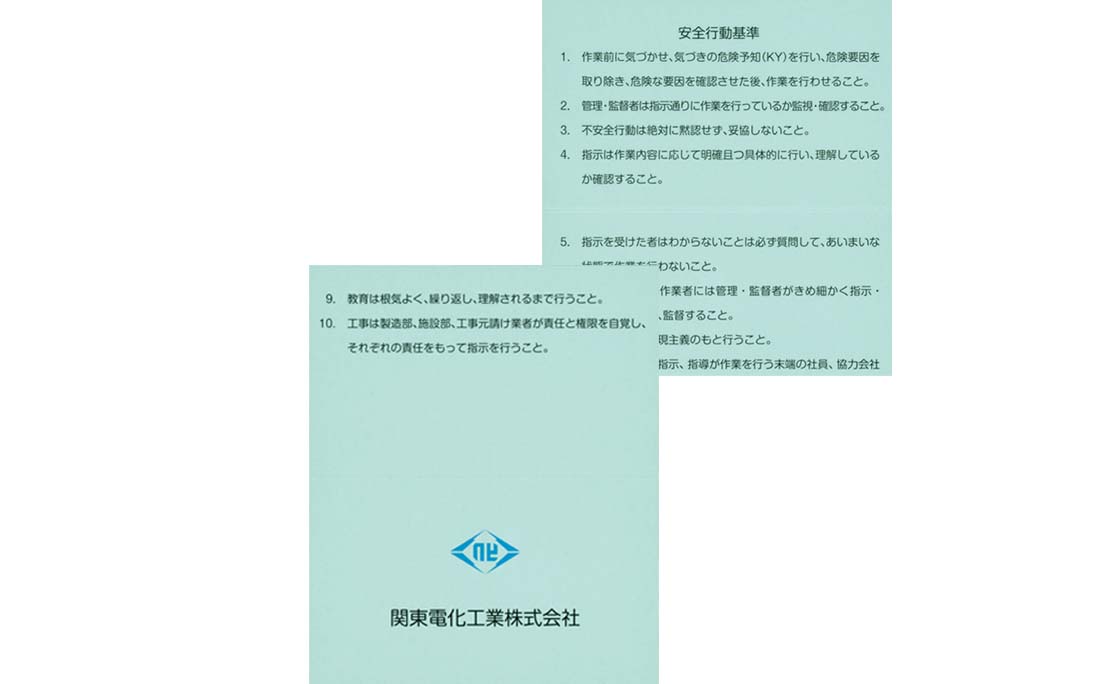
Risk Awareness Equipment
We installed risk awareness equipments at the Shibukawa and Mizushima plants in FY2017. While knowledge and experience are essential for cultivating a capacity to spot potential sources of danger during day-to-day work, we cannot allow people to experience an actual accident or disaster. By experiencing dangerous situations in safety with this risk awareness equipment, it is possible to accumulate such knowledge and experience. We are constantly introducing new devices as we work to enhance the equipment. Participants have said they have become more sensitive toward safety by experiencing conditions they do not normally experience. We will continue this form of education going forward with the inclusion of partner company contractors as well.
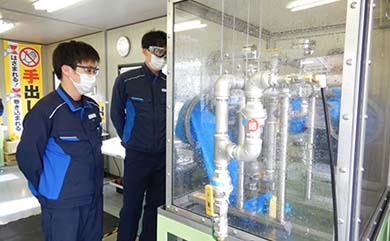
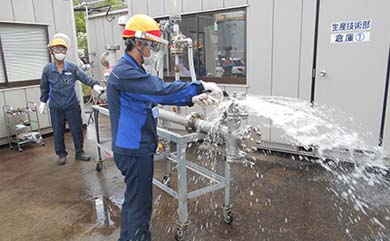
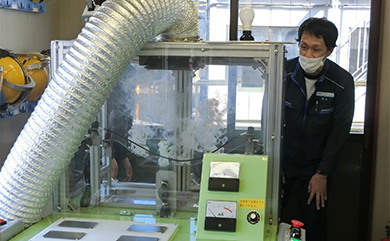
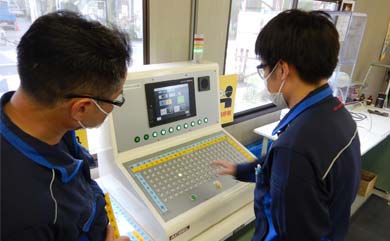
Other Forms of Safety Education
We are working to eliminate unsafe situations and practices by constantly conducting pre-work meeting, work procedure improvements, and safety education according to the type of work. We also set a Safety Day every month, on which we conduct safety education and patrols so that past accidents are not forgotten. This safety education is wide-ranging and includes practical education such as protective clothing education and education for people working in high places, in addition to education on putting pointing and calling into practice, SDS reading, and individual risk avoidance. This training aims to improve the safety awareness and skills of employees. In addition, we also develop risk avoidance trainers and workplace supervisor health & safety trainers and encourage active participation in external safety and health workshops.
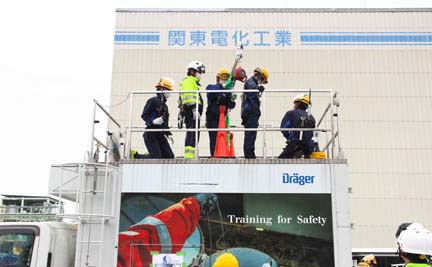
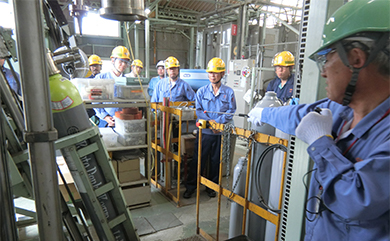
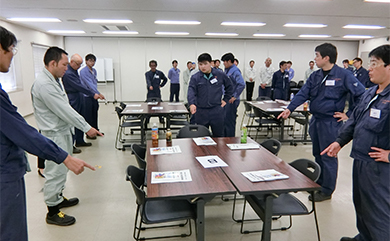
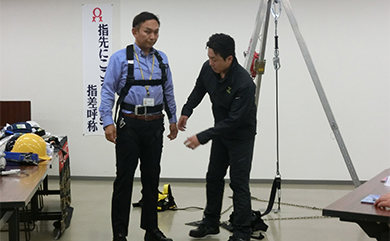
In order to ensure the safety of all workers at the Mizushima Plant, we have established basic safety and health actions and plant rules, distribute the Worker’s Handbook that describes the relevant laws and regulations and the rules of the plant, as well as an SDS Collection for the products we handle, and thoroughly educate workers so that they can work safely in the plant.
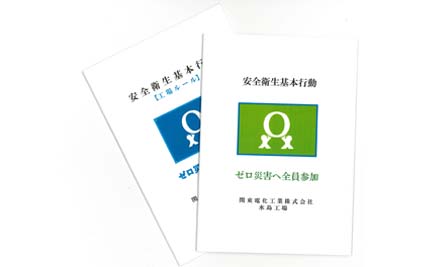
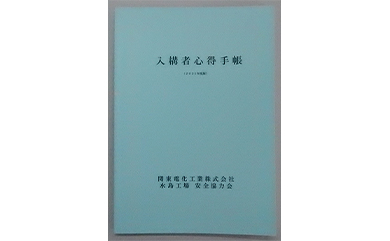
Implementation of Various Training
Every year, we conduct joint disaster prevention drills with the public fire brigade, as well as emergency call drills, safety confirmation drills, evacuation drills, fire drills, and emergency response drills for each department to prepare for emergency situations.
